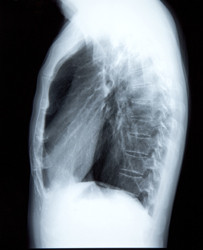Boundaries, distances and other measures
Given a circular wire, which is the surface area of the soap film that spans it? In slightly more mathematical terms the same problem would be: given a boundary curve, which is the minimal area spanning it? The different approaches that have emerged to solve this geometric problem have found applications in many areas of modern mathematics. Techniques and concepts from geometric measure theory are used to solve partial differential equations. They have found application in the calculus of variations and other areas. The 'Dimension phenomena and curvature equations in Carnot groups' (CG-DICE)(opens in new window) project looked beyond the geometry of Euclidean surfaces and the length-minimising curves on these surfaces. The European partners of the CG-DICE project together with their US collaborators focused on Carnot groups, the most fundamental structures in sub-Riemannian geometry. Advances in sub-Riemannian geometry as the generalisation of Riemannian geometry are stimulated by results obtained in Euclidean settings. And the CG-DICE scientists introduced notions in Carnot groups based on ideas of Euclidean geometry. In their research, they studied the evolution of surfaces in Carnot groups in terms of their intrinsic curvature. The asymptotic limit of mean curvature flow provides minimal surfaces in Riemann settings, and therefore the same approach was followed in sub-Riemannian settings. The applications to image processing models based on the how the visual cortex works were then explored. The CG-DICE scientists also proved the existence of solutions for semi-linear equations in Carnot groups associated with Maxwell's equations. Called "wave equations" because of their origin from a class of Maxwell's equations, these higher order equations were satisfied by vector potentials( as it holds in the Euclidean settings. By describing surfaces with metric properties measuring distortion of size and shape, a deeper understanding of sub-Riemannian spaces' mappings was achieved. The geometric structure both influences and is influenced by the behaviour of mappings between the target and source spaces. Such an understanding offered new perspectives on the geometric measure theory. Results of the quantification of analytic properties of mappings were used in the study of metric graphs, fractals and other geometric environments. More than 100 papers with the findings have been published or accepted for publication in international peer-reviewed journals. While crucial questions on dimension phenomena were answered, many issues remain open and will be addressed beyond the end of the EU-funded phase of the CG-DICE project.







